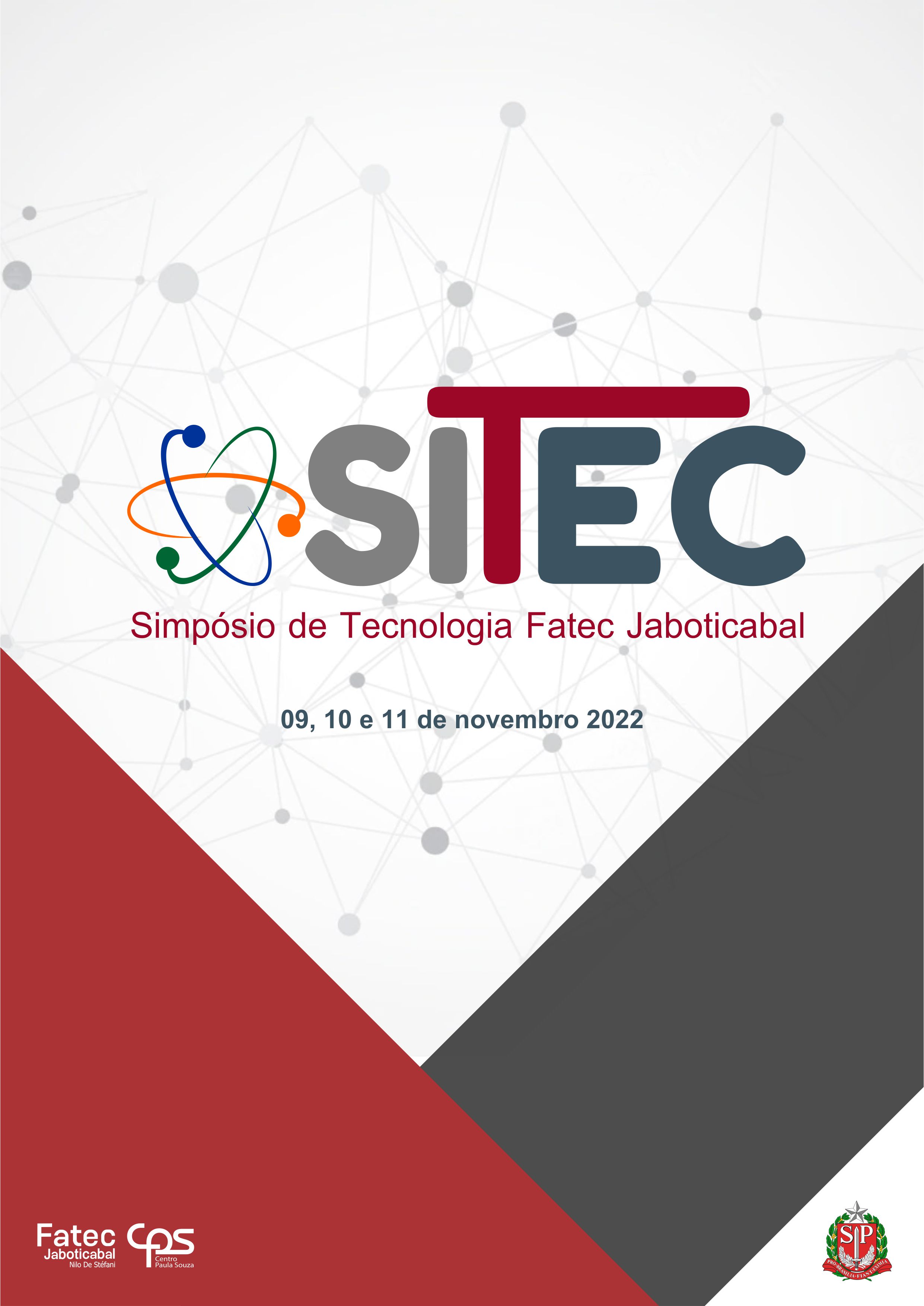BACTÉRIAS RESISTENTES A ANTIMICROBIANOS NA SUINOCULTURA: problemas ambientais e de saúde única
environmental and unique health problem
DOI:
https://doi.org/10.52138/sitec.v12i1.223Palavras-chave:
Poluentes emergentes., Suínos, Antibióticos, Meio ambiente., Contaminação ambiental.Resumo
Os genes de bactérias resistentes são considerados contaminantes emergentes. O uso intensivo de antimicrobianos na produção de suínos confinados leva a uma grande pressão de seleção e de transferências de genes de resistência. A excreção desses fármacos nos dejetos desses animais pode ultrapassar 60%. Sendo assim, é evidente que a suinocultura tem um alto potencial poluidor, e o destino e tratamento dos dejetos da produção, merecem atenção. Os efeitos negativos da disseminação dos genes de resistência a antimicrobianos, afeta diretamente a microbiota do solo, quando ocorre o lançamento desses dejetos sem tratamento. E ainda, pode ser considerado um risco para a saúde pública, acarretando problemas relacionados a resistência bacteriana a antibióticos de uso humano. Esse trabalho é uma revisão bibliográfica, a qual tem o objetivo de demostrar os principais problemas ambientais e de saúde única, das bactérias resistentes a antimicrobianos oriundos da produção intensiva de suínos. Nesse sentido, é notória a importância do tratamento dos dejetos da suinocultura, visando a remoção desses genes de resistência, no entanto ainda existem poucos estudos que mostrem eficiência na remoção desses contaminantes por métodos convencionais de tratamento.
Referências
AZIZ, A. et al. Anaerobic digestion in the elimination of antibiotics and antibiotic-resistant genes from the environment – A comprehensive review. Journal of Environmental Chemical Engineering, 1 fev. 2022. Disponível em: https://www.sciencedirect.com/science/article/pii/S2213343721014007. Acesso em: 4 jun. 2022.
BAKER-AUSTIN, C. et al. Co-selection of antibiotic and metal resistance. Trends in Microbiology, v. 14, abr. 2006. Disponível em: https://doi.org/10.1016/j.tim.2006.02.006. Acesso em: 10 jul. 2022.
CHENG, D. L. et al. Problematic effects of antibiotics on anaerobic treatment of swine wastewater. Bioresource Technology, v. 263, 1 set. 2018. Disponível em: https://www.sciencedirect.com/science/article/pii/S096085241830659X. Acesso em: 7 jun. 2022.
CHENG, D. et al. A critical review on antibiotics and hormones in swine wastewater: Water pollution problems and control approaches. Journal of Hazardous Materials, v. 387, abr. 2020. Disponível em: https://www.sciencedirect.com/science/article/pii/S030438941931636X. Acesso em: 3 jul. 2022.
FANG, J. et al. Antimicrobial resistance profiles and characteristics of integrons in Escherichia coli strains isolated from a large-scale centralized swine slaughterhouse and its downstream markets in Zhejiang, China. Food Control, v. 95, jan. 2019. Disponível em: https://www.sciencedirect.com/science/article/pii/S0956713518303992. Acesso em: 2 jun. 2022.
FRIEDMAN, N. D.; TEMKIN, E.; CARMELI, Y. The negative impact of antibiotic resistance. Clinical Microbiology and Infection, v. 22, 1 maio 2016. Disponível em: https://www.sciencedirect.com/science/article/pii/S1198743X15010289. Acesso em: 19 jul. 2022.
LAN, L. et al. High removal efficiency of antibiotic resistance genes in swine wastewater via nanofiltration and reverse osmosis processes. Journal of Environmental Management, v. 231, p. 439–445, 1 fev. 2019. Disponível em: https://www.sciencedirect.com/science/article/pii/S0301479718312076. Acesso em: 10 jun. 2022.
LI, N. et al. The persistence of antimicrobial resistance and related environmental factors in abandoned and working swine feedlots. Environmental Pollution, v. 255, dez. 2019. Disponível em: https://www.sciencedirect.com/science/article/pii/S0269749119323942. Acesso em: 22 set. 2022.
LI, X. et al. Metagenomic evidence for co-occurrence of antibiotic, biocide and metal resistance genes in pigs. Environment International, v. 158, 1 jan. 2022. Disponível em: https://www.sciencedirect.com/science/article/pii/S0160412021005249. Acesso em: 3 jul. 2022.
MA, Z. et al. Long-term low dissolved oxygen accelerates the removal of antibiotics and antibiotic resistance genes in swine wastewater treatment. Chemical Engineering Journal, v. 334, p. 630–637, 15 fev. 2018. Disponível em: https://www.sciencedirect.com/science/article/pii/S1385894717317576. Acesso em: 10 jun. 2022.
MENZ, J.; OLSSON, O.; KÜMMERER, K. Antibiotic residues in livestock manure: Does the EU risk assessment sufficiently protect against microbial toxicity and selection of resistant bacteria in the environment? Journal of Hazardous Materials, v. 379, 5 nov. 2019. Disponível em: https://pubmed.ncbi.nlm.nih.gov/31279308/. Acesso em: 5 jun. 2022.
MICHELON, W. et al. Microalgae produced during phycoremediation of swine wastewater contains effective bacteriostatic compounds against antibiotic-resistant bacteria. Chemosphere, v. 283, 1 nov. 2021. Disponível em: https://www.sciencedirect.com/science/article/pii/S0045653521017409. Acesso em: 10 jul. 2022.
PISSETTI, C. et al. Antimicrobial resistance in commensal Escherichia coli and Enterococcus spp. isolated from pigs subjected to different antimicrobial administration protocols. Research in Veterinary Science, v. 137, p. 174–185, 1 jul. 2021. Disponível em: https://www.sciencedirect.com/science/article/pii/S0034528821001417. Acesso em: 5 jun. 2022.
SARMAH, A. K.; MEYER, M. T.; BOXALL, A. B. A. A global perspective on the use, sales, exposure pathways, occurrence, fate and effects of veterinary antibiotics (VAs) in the environment. Chemosphere, v. 65, out. 2006. Disponível em: https://www.sciencedirect.com/science/article/pii/S0045653506003213. Acesso em: 10 jul. 2022.
WATANABE, N. et al. Use and environmental occurrence of antibiotics in freestall dairy farms with manured forage fields. Environmental Science and Technology, v. 44, n. 17, p. 6591–6600, 1 set. 2010. Disponível em: https://pubs.acs.org/doi/10.1021/es100834s. Acesso em: 4 jul. 2022.
ZAHEDI, S. et al. Anaerobic treatment of swine manure under mesophilic and thermophilic temperatures: Fate of veterinary drugs and resistance genes. Science of the Total Environment, v. 818, 20 abr. 2022. Disponível em: https://pubmed.ncbi.nlm.nih.gov/34793799/. Acesso em: 5 jul. 2022.
ZAREI-BAYGI, A.; SMITH, A. L. Intracellular versus extracellular antibiotic resistance genes in the environment: Prevalence, horizontal transfer, and mitigation strategies. Bioresource Technolog, 1 jan. 2021. Disponível em: https://pubmed.ncbi.nlm.nih.gov/33254446/. Acesso em: 19 jul. 2022.
Downloads
Publicado
Edição
Seção
Licença
Copyright (c) 2023 Ciência & Tecnologia

Este trabalho está licenciado sob uma licença Creative Commons Attribution 4.0 International License.


